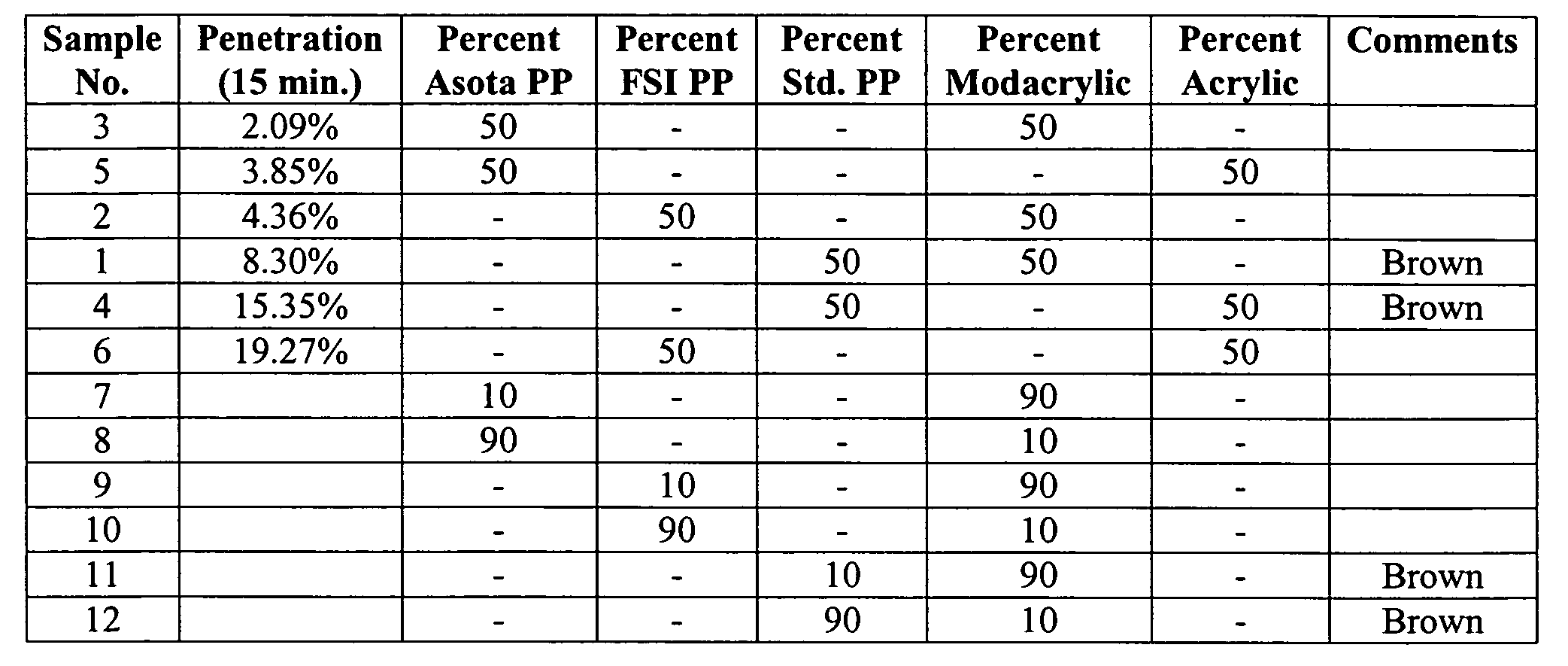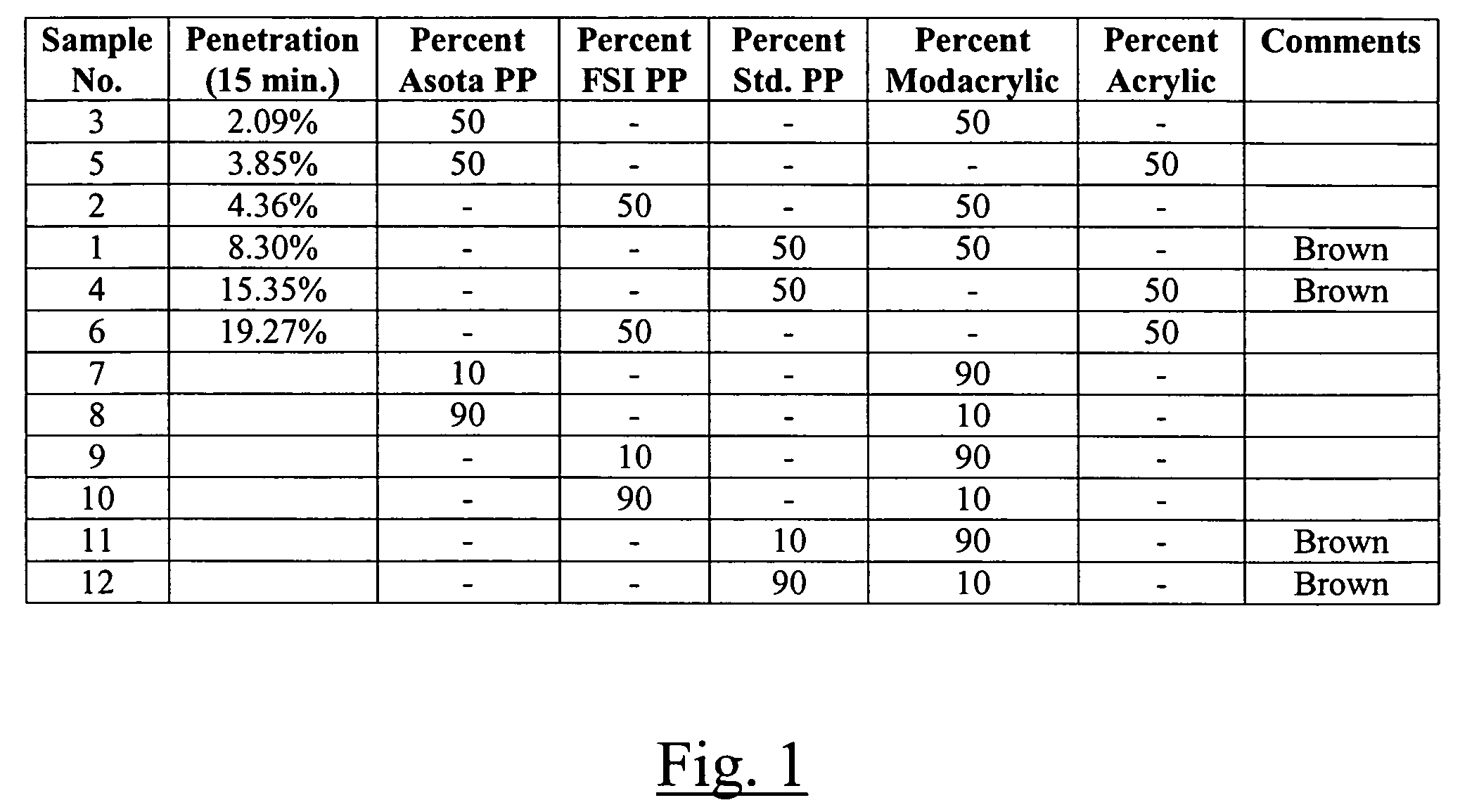Two fiber filtration material
a technology of filtration media and fibers, applied in the field of filtration media, can solve the problems of affecting the fibers, adding cost to the finished filtration product, and prior art not being sufficient, and achieve the effect of superior performan
- Summary
- Abstract
- Description
- Claims
- Application Information
AI Technical Summary
Benefits of technology
Problems solved by technology
Method used
Image
Examples
Embodiment Construction
[0013]The invention is a blend of two types of fibers—polypropylene and either acrylic or modacrylic. The polypropylene fibers have a small amount of an agent on the outer surface of the fibers, and the agent can be an antistatic, lubricating or one of many other agents that are commonly referred to as “extractables” or “extractable agents”, due to their ability to be extracted from the fibers, such as by the well-known alcohol-extraction method: The polypropylene fibers are preferably relatively clean, meaning there are only small amounts of extractable agents on them. This amount is, for example, in the range of about 0.02 to about 0.1 percent by weight, or some other measurable amount. The fibers can be cleaned to remove most of the agent, or they can be formed in a process that leaves little or no such extractable agents. Extractable agents can be added to an essentially clean fiber as desired. Fibers made with small amounts of extractable agents are commonly referred to as “low...
PUM
| Property | Measurement | Unit |
|---|---|---|
| weight percent | aaaaa | aaaaa |
| weight percent | aaaaa | aaaaa |
| weight | aaaaa | aaaaa |
Abstract
Description
Claims
Application Information
 Login to View More
Login to View More - R&D
- Intellectual Property
- Life Sciences
- Materials
- Tech Scout
- Unparalleled Data Quality
- Higher Quality Content
- 60% Fewer Hallucinations
Browse by: Latest US Patents, China's latest patents, Technical Efficacy Thesaurus, Application Domain, Technology Topic, Popular Technical Reports.
© 2025 PatSnap. All rights reserved.Legal|Privacy policy|Modern Slavery Act Transparency Statement|Sitemap|About US| Contact US: help@patsnap.com


